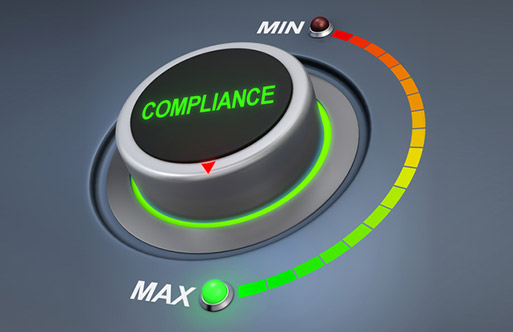Home/ Blog / Building a compliance culture to maximize earnings and minimize risks
Risk & Compliance has become one of the biggest ongoing concerns for financial-institution executives. It has always been important but the changing landscape of the financial industry has resulted in an increased importance, more than anything the industry has seen before. This increase in complications and regulations has had many direct and indirect effects on the industry and all the stakeholders in it. It has directly affected the bottom lines of organizations, because of the rise in costs of compliance.
Costs to ensure regulatory compliance have dramatically increased relative to banks’ earnings and credit losses, especially as the scope of regulatory requirements continues to change. Governments are now more careful and focused when it comes to the financial industry. It isn’t a mystery why they are trying to be more vigilant now – we all know what the industry went through in the first decade of the 2000s. Mortgage servicing was a learning opportunity for regulators that, following the crisis, resulted in increasingly tight scrutiny across many areas of a bank’s operations.

Adapting to the new status quo
It would be a mistake to think of this increased interest and vigilance as a trend that will go away. Governments are not focusing more on regulations for the financial industry because they don’t treat it with the importance it deserves. The reality is the opposite – governments are more interested in regulating the financial industry because they finally realize how important it is. The financial crisis was a wake-up call not just for people in the banking industry and the government – it was a wake-up call for the whole world.
The fact is that the financial industry is the backbone of everything in the economy. People realized back then that everything linked back to the financial industry, and a collapse here would mean a collapse everywhere. This resulted in people putting more pressure on their representatives to regulate the financial industry and to make it more risk-averse, which is what brought us to the current status-quo of the financial industry.
Embracing the change
Smart companies know that they need to adapt to the way that society changes. That is why banking and financial industry organizations need to create a culture of compliance. We cannot treat compliance and regulations as an obstacle to our plans. Instead, we need to inculcate a compliance culture which ensures that everything is done with due consideration for compliance.
This change is already being incorporated in many organizations. There was a time when there would be a compliance department operating independently form all other departments. Organizations soon realized that this was not the right approach towards compliance. Rather than a separate department and cost center responsible just for ensuring compliance to regulatory standards, banks are now moving ownership of a department or product risks and regulatory compliance requirements to the actual business units/functions and employees.
Compliance and risk management staff are no longer tasked with completing the compliance activities; they are instead tasked with ensuring that the business units complete their own risk assessments, manage their own compliance activities and ensure that compliance to their specific regulatory requirements are being met. By pushing these responsibilities to the business units, banks are hoping to maximize earnings from their product offerings while minimizing regulatory compliance risk. Compliance and risk management thus becomes part of the company culture.
New cultures need new tools
Changing the culture is not an easy task, because culture is not a tangible thing. If organizations truly want to change their approach and create a culture which puts due focus on compliance, they will need to provide their employees with the right tools to get the job done properly. We cannot expect people to change if we ask them to work in the same way as before. To create a better culture, we need to provide better tools, and that is where compliance management systems come into play.
We are headed towards a future with more regulations. Another big reason that there are so many new regulations is that the speed of innovation in the financial industry has increased exponentially. New technology has allowed the industry to create more complex products than ever before. Then there are new investment opportunities which the government still hasn’t decided how to regulate. All these things are a sign that companies need to change their approach towards compliance management systems.
Companies can no longer expect manual compliance management systems to be good enough. They did the job fine when regulations were slow to change and when everyone was using manual systems. Now that most of your competition is using automated compliance management systems, holding on to manual programs to manage compliance is a strong competitive disadvantage.
The biggest obstacle that companies face when it comes to acquiring a compliance management system is the cost. Most of the solutions available are exorbitantly expensive, with long implementation cycles and thus are only being deployed by large organizations. To use these solutions, organizations have to enter a multi-million-dollar agreement with long-term obligations. This is not the case anymore.
There are fantastic compliance management solutions available without long-term commitments. These are available in subscription based models with monthly payments. This means that small to mid-sized banking and financial institutions can now easily afford to use compliance management systems to improve their compliance. Want to see how to empower your compliance department? Simply look at all the things that a compliance management system can do for you.
About the company
360factors, Inc. (Austin, TX) helps companies improve business performance by reducing risk and ensuring compliance. Predict360, its flagship software product, vertically integrates regulations and requirements, policies and procedures management, risks and controls, audit management and inspections, and on-line training and qualifications, in a single cloud-based platform based on artificial intelligence.
Remain up-to-date on industry news/updates through our Twitter & Linkedin profiles.
Request a Demo
Complete the form below and our business team will be in touch to schedule a product demo.
By clicking ‘SUBMIT’ you agree to our Privacy Policy.



